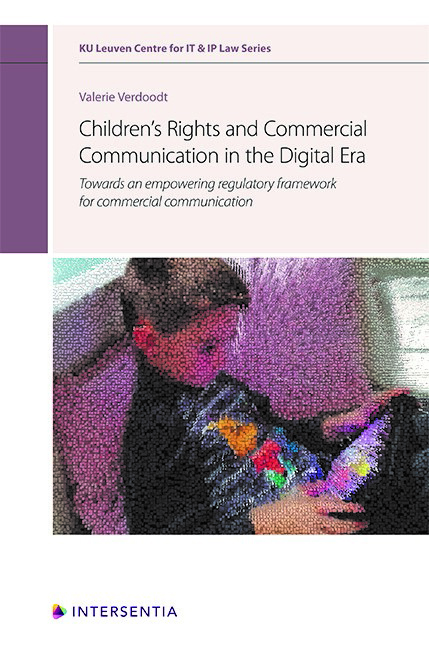 Children's Rights and Commercial Communication in the Digital Era
Children's Rights and Commercial Communication in the Digital Era Published online by Cambridge University Press: 23 July 2020
INTRODUCTION. The aim of this chapter is to gain a deeper understanding of the role of children's rights in regulating new forms of commercial communication. The chapter starts by providing a brief introduction to children's fundamental rights at the international and EU level. It then identifies which children’s rights are at stake, studies how they have been reconfigured in the context of commercial communication and interprets them in this specific context. This interpretation forms the analytical framework for the evaluation of the legislative and alternative regulatory instruments in the following parts of the book.
SECTION I. INTRODUCING THE CHILDREN'S RIGHTS FRAMEWORK
Introduction. Before studying the relevant children's rights and principles, it is important to take a step back and look at how children's rights have emerged, at both the international and European level. This section also introduces children's rights in a digital environment, considering the increased digitisation of children's worlds.
CHILDREN'S RIGHTS AT INTERNATIONAL LEVEL
From subject of protection to active rightsholders From subject of protection… The idea that children are active holders of rights and, as such, form a separate social and legal category is only a recent creation. Until the end of the Middle Ages, the dominant attitude towards children in the Western countries was one of indifference. It was only during the 16th to 18th century that the idea of children as a separate group with specific characteristics and expected behaviour gained prominence. Back then, children were regarded as innocent creatures in need of education, as compared to the “worldly-wise” adults. Alongside this societal attitude towards children, vulnerability and incapacity have also been the bedrock of the Western legal conception of children. At the beginning of the 20th century, the first child protection laws emerged and compulsory education was introduced in most countries. In 1924, the League of Nations adopted the Declaration on the Rights of the Child, which marked the starting point of a journey towards full recognition of children's rights in international law.
…TO ACTIVE RIGHTSHOLDERS. Nowadays, it is generally recognised that the human rights framework is not only applicable to adults but also to children as a specified group. In fact, the United Nations Convention on the Rights of the Child is the most widely accepted instrument of international law, with 193 countries having ratified it (including all EU Member States).
To save this book to your Kindle, first ensure [email protected] is added to your Approved Personal Document E-mail List under your Personal Document Settings on the Manage Your Content and Devices page of your Amazon account. Then enter the ‘name’ part of your Kindle email address below. Find out more about saving to your Kindle.
Note you can select to save to either the @free.kindle.com or @kindle.com variations. ‘@free.kindle.com’ emails are free but can only be saved to your device when it is connected to wi-fi. ‘@kindle.com’ emails can be delivered even when you are not connected to wi-fi, but note that service fees apply.
Find out more about the Kindle Personal Document Service.
To save content items to your account, please confirm that you agree to abide by our usage policies. If this is the first time you use this feature, you will be asked to authorise Cambridge Core to connect with your account. Find out more about saving content to Dropbox.
To save content items to your account, please confirm that you agree to abide by our usage policies. If this is the first time you use this feature, you will be asked to authorise Cambridge Core to connect with your account. Find out more about saving content to Google Drive.